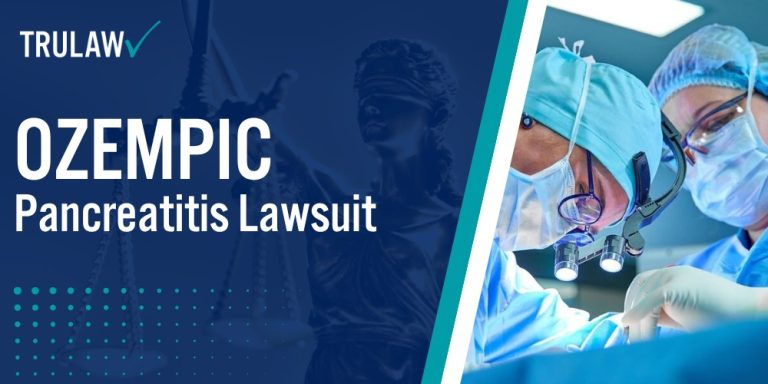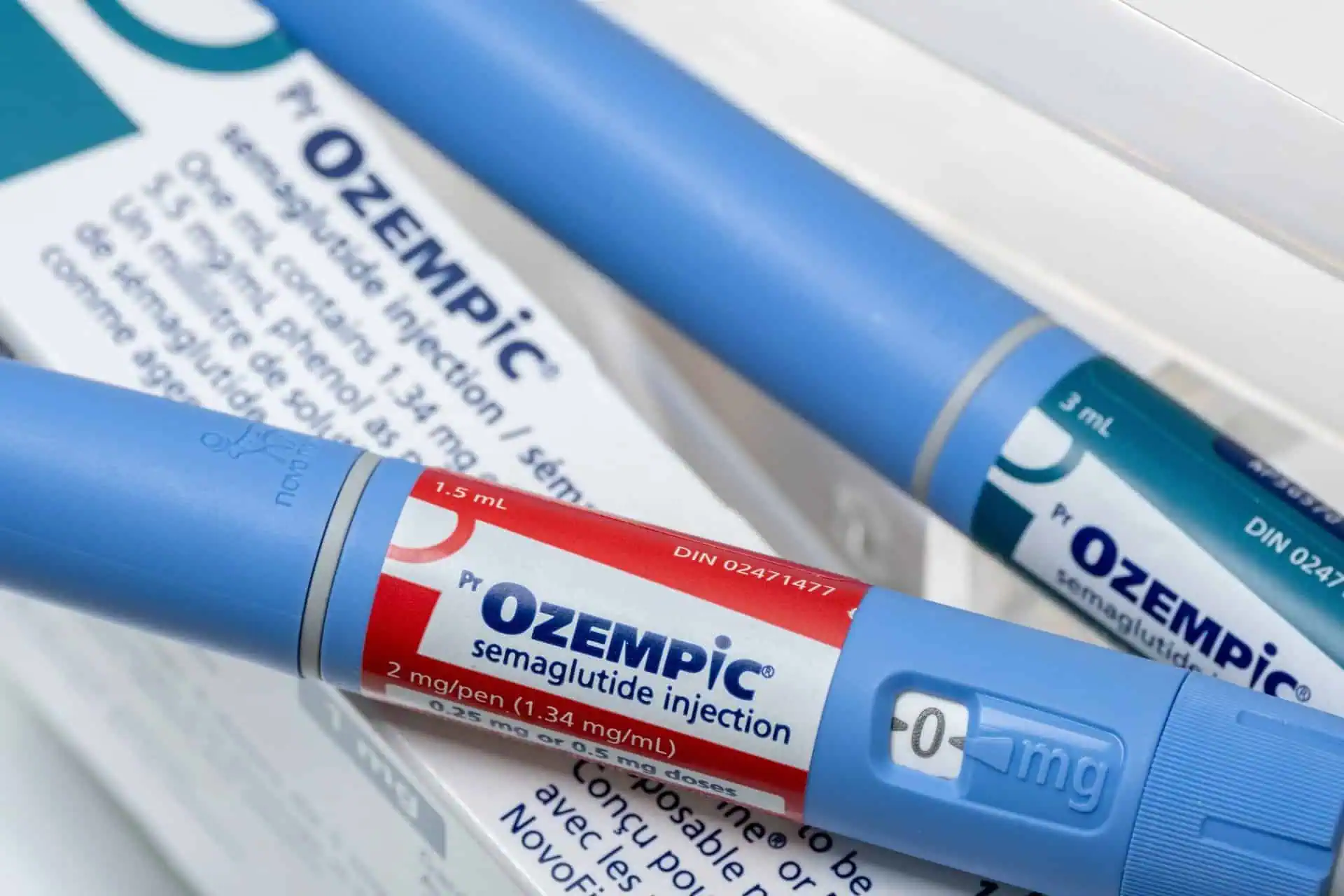Semaglutide operates through a sophisticated mechanism that fundamentally alters several digestive and metabolic processes within the body.
As a GLP-1 receptor agonist sharing 94% structural homology with human GLP-1, the medication binds to and activates receptors located primarily in the gastrointestinal tract, pancreas, and brain, triggering a cascade of physiological responses that extend far beyond simple blood sugar control.
Ozempic triggers multiple physiological responses throughout the body, primarily affecting these systems:
- Insulin Secretion Enhancement: Stimulates pancreatic beta cells to release insulin in response to elevated blood glucose levels, providing glucose-dependent control that reduces hypoglycemia risk
- Glucagon Suppression: Reduces the release of glucagon from pancreatic alpha cells, preventing the liver from producing excess glucose during meals
- Gastric Emptying Delay: slows the rate at which food moves from the stomach to the small intestine, creating prolonged feelings of fullness
- Appetite Regulation: Acts on brain centers controlling hunger and satiety, reducing overall food intake and cravings
- Hepatic Glucose Production: Decreases the liver’s glucose output through both direct and indirect mechanisms
The medication achieves its effects through once-weekly subcutaneous injections, with the FDA approving doses of 0.5 mg and 1.0 mg for diabetes management.
While the FDA approved doses of 0.5 mg and 1.0 mg for diabetes management, the agency has also issued warnings about potential risks including pancreatitis, thyroid cancer concerns based on animal studies, and other serious adverse events.
According to FDA prescribing information, patients typically start with 0.25 mg weekly for four weeks before increasing to therapeutic doses.
The drug’s half-life of approximately one week allows for convenient weekly dosing, but this extended presence in the body also means that adverse effects, particularly those affecting gastric motility, can persist and potentially worsen over time.
The delayed stomach emptying mechanism, while contributing to weight loss and improved glycemic control, has emerged as a particular concern in litigation.
This slowing of stomach motility can progress from a therapeutic effect to a pathological condition, potentially triggering a cascade of gastrointestinal complications.
Rise in Off-Label Weight Loss Drug Prescriptions and Usage Patterns
The transformation of Ozempic from a diabetes prescription drug to a weight loss phenomenon represents one of the most dramatic shifts in pharmaceutical prescribing patterns in recent history.
What began as anecdotal reports of weight loss among diabetic patients quickly evolved into a full-scale cultural movement, driven by celebrity endorsements, social media virality, and aggressive off-label prescribing that fundamentally changed the drug’s user demographics and market positioning.
The surge in off-label Ozempic prescriptions has created unprecedented market disruptions, as evidenced by:
- Dramatic Prescription Shifts: Analysis of prescribing data shows that while over 90% of Ozempic prescriptions in 2018 were for type 2 diabetes, this figure dropped to just 58% by 2023, indicating massive off-label use
- Celebrity and Social Media Influence: High-profile endorsements from celebrities like Oprah Winfrey, Amy Schumer, and Chelsea Handler sparked unprecedented demand, with the hashtag #Ozempic generating millions of views on TikTok, often downplaying potential gastrointestinal issues associated with the medication
- Supply Shortages: The surge in off-label prescribing created nationwide drug shortages lasting through 2024, leaving diabetic patients unable to access their prescribed medication
- Cosmetic Weight Loss Usage: Many new users sought the medication purely for aesthetic weight loss rather than medical necessity, often without meeting clinical criteria for obesity treatment
The social media phenomenon surrounding Ozempic fundamentally altered public perception of prescription medications.
Platforms like TikTok and Instagram became virtual marketplaces where users documented their weight loss journeys in real-time, creating a feedback loop that drove ever-increasing demand.
According to research published in the Journal of Medicine, Surgery, and Public Health, content analysis of TikTok videos revealed that users predominantly focused on weight loss benefits while minimizing or ignoring discussion of serious health risks and side effects.
Increasing Prescribing Pressure for GLP 1 Drugs
The prescribing shift has created particular challenges for healthcare providers attempting to balance patient demands with medical ethics and drug availability, while drug manufacturers continued marketing campaigns despite mounting safety concerns.
Many physicians report feeling pressured to prescribe Ozempic off-label to patients clamoring for the medication after seeing dramatic transformations on social media, despite serious concerns about potential complications.
This pressure has led to prescribing decisions that may not fully account for individual risk factors, including susceptibility to pancreatic inflammation and gastrointestinal complications.
Market analysis reveals that the off-label prescribing boom generated billions in additional revenue for manufacturer Novo Nordisk, even as reports of serious adverse events began accumulating and lawsuits claim the company prioritized profits over patient safety.
The company’s marketing strategies, while not explicitly promoting off-label use, capitalized on the weight loss buzz through carefully crafted messaging that emphasized the medication’s “metabolic benefits” beyond blood sugar control.
Internal documents emerging through litigation discovery suggest the company failed to implement stronger safety warnings about gastrointestinal risks despite being well aware of the off-label prescribing trends and choosing to prioritize market expansion.
Unlike the original diabetic patient population, many off-label users are younger, healthier individuals without the metabolic dysfunction that might warrant acceptance of serious side effect risks.
These patients, seeking primarily cosmetic benefits, may have been inadequately counseled about the potential for developing conditions like pancreatitis that can trigger cascading gastrointestinal complications including gastroparesis.
The emergence of pancreatitis in this population raises questions about whether the drug’s risk-benefit profile was appropriately communicated and whether additional warnings should have been implemented as prescribing patterns shifted.
If you or a loved one developed pancreatitis or gastroparesis after taking Ozempic for any purpose, including off-label weight loss, you may be eligible to seek compensation.
Contact TruLaw using the chat on this page to receive an instant case evaluation and determine whether you qualify to join others in filing an Ozempic pancreatitis lawsuit today.


